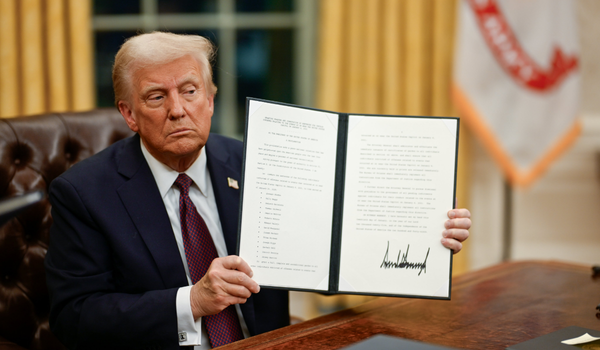On October 1, 2025, at exactly 12:01 a.m., the US Government officially shut down. Hundreds of thousands of federal workers were furloughed, agencies froze nonessential programs, and “Closed” signs popped up across the country. There have been 11 government shutdowns since 1976, with Trump's administration holding the record for the longest in 2018.
The shutdown was the result of the stalled federal budget process. So, what does this process look like? Why does it seem so easily derailed? And when did it go from good accounting to the political game of chicken it is today?
What Is This Policy Tool?
Our current iteration of the federal budget process was created by the Congressional Budget and Impoundment Control Act of 1974, a post-Watergate reform meant to give Congress more control over federal spending. Before that, the President had significantly more say over what got funded (and what didn’t).
At its core, the federal budget process is the government’s annual to-do list for money, and should be a collaboration between Congress and the White House.
It begins with the president’s budget request, a proposal sent to Congress which lays out the White House’s priorities for the next fiscal year (October 1 of that calendar year to September 30 the following year). Then Congress gets to work: committees hold hearings, crunch numbers, and (in theory) pass 12 individual spending bills to fund everything from defense to education.
If this sounds straightforward, it’s not. Think of it as trying to plan a group vacation with 535 people, who often can’t even agree on where to visit.
How Does It Work (When It Actually Works)?
Here's the ideal budget process sequence:
- February: The President submits a budget request to Congress.
- Spring: Budget committees review it and (ideally) agree on a budget resolution—a big-picture spending blueprint.
- Summer: The 12 Appropriations subcommittees draft and pass twelve separate funding bills.
- Before October 1: Congress passes those bills, the President signs them, and the government stays open.
Simple enough, right? Wrong. In the 50+ years since the Congressional Budget and Impoundment Control Act's enactment, Congress has only been able to meet the October 1 deadline four times.
What's It Like Today?
Today’s budget process has become more political theater than planning tool with both parties vying to prove who’s in charge of the national agenda. Congress rarely passes all twelve spending bills on time. Instead, lawmakers rely on continuing resolutions (temporary stopgaps) or, when things really go south, government shutdowns.
This year was no different. Despite starting the process in February, every major deadline was missed. By the time the clock struck midnight on October 1, there was no deal, no stopgap, and no paycheck for thousands of public servants.
Why This Matters To You
Though increasingly a part of the political drama we’ve come to know, government shutdowns cause real impact. They hit credit markets, policymaking, and your wallet.
Each week of a shutdown shaves about 0.1% off GDP growth. That means slower spending, paused services, and nervous credit markets. Credit rating agencies don’t love fiscal chaos either; the more uncertainty Congress creates, the more expensive it gets for the government (and, eventually, for you) to borrow money.
The last major shutdown in 2018 cost the economy $11 billion, delayed tax refunds, and left nearly 700,000 federal workers without pay. Another, in 2013, shaved $24 billion off GDP in just over two weeks. Each round of brinkmanship deepens gridlock, discourages long-term policy planning, and makes it harder for Congress to function like, well, Congress.
And while the headlines always show shuttered parks and empty monuments, the ripple effects go deeper: delayed passports and visas, slower IRS refunds, disrupted SNAP and Medicaid services, and longer airport security lines.
So yes, every shutdown matters. It’s not just about who “wins” the standoff; it’s about whether the US can still govern itself without turning the economy into collateral damage.
Understanding Policy Is Your First Form of Power
Subscribe to The Scrape, our biweekly newsletter that breaks down the public policy moves shaping your life. No spin. Just clarity.




